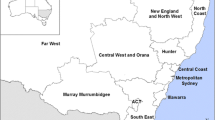Abstract
We present future fire danger scenarios for the countries bordering the Mediterranean areas of Europe and north Africa building on a multi-model ensemble of state-of-the-art regional climate projections from the EU-funded project ENSEMBLES. Fire danger is estimated using the Canadian Forest Fire Weather Index (FWI) System and a related set of indices. To overcome some of the limitations of ENSEMBLES data for their application on the FWI System—recently highlighted in a previous study by Herrera et al. (Clim Chang 118:827–840, 2013)—we used an optimal proxy variable combination. A robust assessment of future fire danger projections is undertaken by disentangling the climate change signal from the uncertainty derived from the multi-model ensemble, unveiling a positive signal of fire danger potential over large areas of the Mediterranean. The increase in the fire danger signal is accentuated towards the latest part of the transient period, thus pointing to an elevated fire potential in the region with time. The fire-climate links under present and future conditions are further discussed building upon observed climate data and burned area records along a representative climatic gradient within the study region.





Similar content being viewed by others
References
Amatulli G, Camia A, San-Miguel-Ayanz J (2013) Estimating future burned areas under changing climate in the EU-Mediterranean countries. Sci Total Environ 450–451:209–222
Bedia J, Herrera S, Gutiérrez J, Zavala G, Urbieta I, Moreno J (2012) Sensitivity of fire weather index to different reanalysis products in the Iberian Peninsula. Nat Hazards Earth Syst Sci 12:699–708
Bedia J, Herrera S, San Martín D, Gutiérrez J, Koutsias N (2013) Robust projections of fire weather index in the mediterranean using statistical downscaling. Clim Chang 120:229–247
Camia A, Amatulli G, San Miguel-Ayanz J (2008) Past and future trends of forest fire danger in Europe. Technical Report EUR 23427 EN - 2008, Institute for Environment and Sustainability. JRC, European Comission, Ispra
Camia A, Durrant TH, San-Miguel-Ayanz J (2010) The european fire database: development, structure and implementation. In: 6th International conference on forest fire research, A20
Carvalho A, Flannigan MD, Logan KA, Gowman L, Miranda AI, Borrego C (2010) The impact of spatial resolution on area burned and fire occurrence projections in Portugal under climate change. Clim Chang 98:177–197
Christensen J, Boberg F, Christensen O, Lucas-Picher P (2008) On the need for bias correction of regional climate change projections of temperature and precipitation. Geophys Res Lett 35:L20,709
Christensen JH, Carter TR, Rummukainen M, Amanatidis G (2007) Evaluating the performance and utility of regional climate models: the PRUDENCE project. Clim Chang 81:1–6
Collins M, Booth BBB, Harris GR, Murphy JM, Sexton DMH, Webb MJ (2006) Towards quantifying uncertainty in transient climate change. Clim Dyn 27(2–3):127–147
Coppola E, Giorgi F, Rauscher SA, Piani C (2010) Model weighting based on mesoscale structures in precipitation and temperature in an ensemble of regional climate models. Clim Res 44:121–134
Dimitrakopoulos A, Bemmerzouk A, Mitsopoulos I (2011) Evaluation of the canadian fire weather index system in an eastern Mediterranean environment. Meteorol Appl 18:83–93
Groisman PY, et al (2007) Potential forest fire danger over Northern Eurasia: changes during the 20th century. Glob Planet Chang 56:371–386
Herrera S, Fita L, Fernández J, Gutiérrez J (2010) Evaluation of the mean and extreme precipitation regimes from the ENSEMBLES regional climate multimodel simulations over Spain. J Geophys Res 115
Herrera S, Bedia J, Gutiérrez J, Fernández J, Moreno JM (2013) On the projection of future fire danger conditions with various instantaneous/mean-daily data sources. Clim Chang 118:827–840
Kjellström E, Boberg F, Castro M, Christensen H, Nikulin G, Sánchez E (2010) Daily and monthly temperature and precipitation statistics as performance indicators for regional climate models. Clim Res 44:135–150
Krawchuk M, Cumming S, Flannigan M (2009) Predicted changes in fire weather suggest increases in lightning fire initiation and future area burned in the mixedwood boreal forest. Clim Change 92:83–97
Krawchuk MA, Moritz MA (2010) Constraints on global fire activity vary across a resource gradient. Ecology 92(1):121–132
Lawson B, Armitage O (2008) Weather guide for the Canadian Forest Fire Danger Rating System. Technical Report. Natural Resources Canadian, Canadian For Service, Edmonton, Canada
Littell JS, Elsner MM, Mauger GS, Lutz E, Hamlet AF, Salath E (2011) Regional climate and hydrologic change in the northern US rockies and pacific northwest: internally consistent projections of future climate for resource management. Technical Report. University of Washington, College of the Environment
Moriondo M, Good P, Durao R, Bindi M, Giannakopoulos C, Corte-Real J (2006) Potential impact of climate change on fire risk in the Mediterranean area. Clim Res 31:85–95
Mouillot F, Rambal S, Joffre R (2002) Simulating climate change impacts on fire frequency and vegetation dynamics in a Mediterranean-type ecosystem. Glob Chang Biol 8(5):423–437
Nakićenović N (2000) Greenhouse gas emissions scenarios. Technol Forecast Soc Chang 65:149–166
Palheiro P, Fernandes P, Cruz M (2006) A fire behaviour-based fire danger classification for maritime pine stands: comparison of two approaches. Forest Ecol Manag 234S, S54
Pausas J, Paula S (2012) Fuel shapes the fireclimate relationship: evidence from mediterranean ecosystems. Glob Ecol Biogeogr 21:1074–1082
Pechony O, Shindell DT (2010) Driving forces of global wildfires over the past millennium and the forthcoming century. P Natl Acad Sci USA 107:19,167–19,170
Räisänen J (2007) How reliable are climate models?Tellus A 59:2–29
San-Miguel-Ayanz J, Moreno J, Camia A (2013) Analysis of large fires in european mediterranean landscapes: lessons learned and perspectives. For Ecol Manag 294:11–22
Seneviratne S, et al (2012) Changes in climate extremes and their impacts on the natural physical environment. In: Field C, Barros V, Stocker T, Qin D, Dokken D, Ebi K, Mastrandrea M, Mach K, Plattner GK, Allen S, Tignor M, Midgley P (eds) Managing the risks of extreme events and disasters to advance climate change adaptation. Cambridge University Press, Cambridge, pp 109–230
Stocks B, Fosberg M, Lynham T, Mearns L, Wotton B, Yang Q, Jin JZ, Lawrence K, Hartley G, Mason J, McKenney D (1998) Climate change and forest fire potential in Russian and Canadian boreal forests. Clim Change 38:1–13
Stocks B, Lawson B, Alexander M, Van Wagner C, McAlpine R, Lynham T, Dube D (1989) The Canadian forest fire danger rating system - an overview. For Chron 65(6):450–457
van der Linden P, Mitchell J (2009) ENSEMBLES: climate change and its impacts: summary of research and results from the ENSEMBLES project. Technical report. Met Office Hadley Centre, Exeter
van Meijgaard E, van Ulft L, Lenderink G, de Roode S, Wipfler L, Boers R, Timmermans R (2012) Refinement and application of a regional atmospheric model for climate scenario calculations of Western Europe. Climate changes spatial planning report KvR 054/12. KNMI, TNO and Wageningen UR
van Wagner CE (1970) Conversion of William’s severity rating for use with the fire weather index. Information report PS–X–21, Canadian forestry service, Ontario, Canada
van Wagner CE (1987) Development and structure of the Canadian forest fire weather index. Forestry technical report 35. Canadian Forestry Service, Ottawa
Viegas D, Bovio G, Ferreira A, Nosenzo A, Sol B (1999) Comparative study of various methods of fire danger evaluation in southern Europe. Int J Wildland Fire 9:235–246
Weedon G, et al (2011) Creation of the WATCH forcing data and its use to assess global and regional reference crop evaporation over land during the Twentieth Century. J Hydrometeorol 12:823–848
Williams A, Karoly D, Tapper N (2001) The sensitivity of Australian fire danger to climate change. Clim Change 49(1–2):171–191
Winkler JA, Palutikof JP, Andresen JA, Goodess CM (1997) The simulation of daily temperature time series from GCM output. Part II: sensitivity analysis of an empirical transfer function methodology. J Clim 10:2514–2532
Acknowledgments
The research leading to these results has received funding from the EXTREMBLES project (CGL2010-21869) funded by the Spanish R&D programme and from the European Union’s Seventh Framework Programme (FP7/2007-2013) under grant agreement 243888 (FUME Project). The authors acknowledge the RCM data sets from the EU-FP6 project ENSEMBLES (http://ensemblesrt3.dmi.dk) and would also like to thank Erik van Meijgaard from the Royal Netherlands Meteorological Institute (KNMI) for making available ENSEMBLES RACMO2 climate model output verifying at 12:00 UTC. We are also grateful to Jesús Fernández and three anonymous reviewers for their insightful comments that greatly contributed to the improvement of the original manuscript.
Author information
Authors and Affiliations
Corresponding author
Electronic supplementary material
Below is the link to the electronic supplementary material.
Rights and permissions
About this article
Cite this article
Bedia, J., Herrera, S., Camia, A. et al. Forest fire danger projections in the Mediterranean using ENSEMBLES regional climate change scenarios. Climatic Change 122, 185–199 (2014). https://doi.org/10.1007/s10584-013-1005-z
Received:
Accepted:
Published:
Issue Date:
DOI: https://doi.org/10.1007/s10584-013-1005-z




